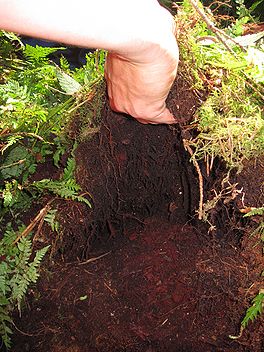LFS:SoilWeb/Soil Classification
| SoilWeb Learning Resource | |
|---|---|

| |
| Land and Food Systems | |
| Welcome to the wiki for SoilWeb200. The SoilWeb200 learning resource provides students with text, graphical and interactive web-based information to assist them in learning the connections among a large number of concepts and to relate them to various soil management issues as presented in the course APBI 200 - Introduction to Soil Science. | |
| Associated Pages | |
Soils form a continuum upon the Earth's surface and gradually change from one to another. As soils cannot be readily separated from one another, classification has proved to be a difficult and challenging task. Soil classifications are not truths that can be discovered but rather methods of organizing information in ways that seem logical and useful.
Soil classification can be approached from the perspective of soil as a material and soil as a resource. The former approach is commonly used by engineers who classify soils according to their engineering properties (i.e., texture, water content, strength) as they relate to use for foundation support or building material. An example of an engineering classification system for soils is the Unified Soil Classification System (USCS). For soil resources, experience has shown that a natural system approach to classification (i.e., grouping soils by their morphology, behaviour, and genesis), results in classes that can be interpreted for many diverse uses. This is in contrast to a technical system approach to soil classification, where soils are grouped according to their fitness for a specific use.